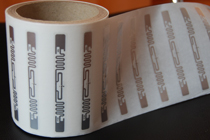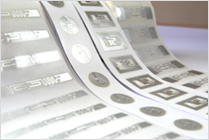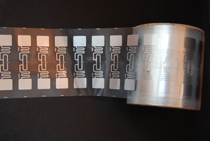>> RFID Inlay
RFID Inlay
Radio-frequency identification, or RFID, technology provides identifying information about a person or an object, much like Barcodes technology does. The RFID Inlay -- which can be as small as a grain of rice -- is the functional part of an RFID tag's label that encodes the identifying information. The RFID inlay uses radio frequency waves to relay information to a computer system via an RFID reader.
The RFID inlay consists of two components. An integrated circuit or microchip that stores personal identifying information attaches to a small coil of aluminum, copper or silver wires called the antenna, which transmits and receives radio frequency signals. The microchip and antenna are then placed on a label, and the entire unit is encased in plastic.
Description:
Operating Frequency
HF 13.56MHz, UHF GLOBAL 860MHz-960MHz
Standard
ISO14443, ISO15693, ISO 18000
Material: PVC, PET
Dimension
HF: 300*25mm, 86*54mm, 80*50mm, 50*50mm,
dia.50mm, 45*45mm, dia.45mm, 40*25mm, 35*35mm, dia.35mm, dia.30mm, 25*25mm, dia.25mm, etc
UHF: 300*25mm, 120*38mm, 100*100mm, 100*15mm,
86*54mm, 80*50mm, etc
Thickness: 0.10 - 0.15mm
Antenna
HF: AL Etching, Ultrasonic Embedding
UHF: AL Etching
Bonding
HF: FLIP chip, MOA2
UHF: Flip chip
Working temperature: -25℃ ~ +55℃
Store temperature: -25℃ ~ +65℃ |
 |
| RFID Wet Inlay |
 |
| RFID Wet Inlay |
 |
| RFID Dry Inlay |
|
RFID Inlay Types
RFID inlays are classified as "wet" or "dry". RFID inlays are considered "wet" if an adhesive is applied to the inlay to adhere it to a pressure-sensitive liner that comprises the label. Inlays are considered "dry" when the inlay is attached to the label without the use of an adhesive.
* Any question or inquiry about RFID card and RFID related products, please send email to info@oprfid.com, we will reply you within 24 hours, thanks |


